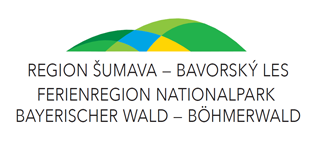Lindberg – History
Lindberg municipality was formed in 1821 when several towns joined together to form a common municipal authority. Since its foundation between the years of 1345-56, the village of Lindberg with 19 farms gradually added 21 districts to become the municipality it is today. Lindberg currently boasts around 2,400 residents.
The glassmaking tradition over the course of the centuries has made a lasting impression on the community. Glass from Lindberg attained world renown and is still a sought-after collectable. The manor houses in Buchenau and Ludwigsthal attest to the glories of this bygone era.
Schloss Buchenau is a manor built by Benedikt von Poschinger in 1840 and later extended. This grand residence was part of the “Hilzenhütte” settlement, and was only later renamed Buchenau. Glass from Buchenau gained an international reputation and still fetches top dollar at auctions. In 1942, the estate was sold to a private individual. The cook book author Erna Horn lived and worked here for many years. Today a conservation association is dedicated to preserving the structure.
The Bohemian glassmaker Georg Christoph Abele founded a mirror glassworks in the Ludwigsthal district in 1826. After its completion, he was permitted by King Ludwig I. of Bavaria to call the settlement Ludwigsthal and proceeded to build Schloss Ludwigsthal manor in 1830. The building plans for this classicist structure were produced by the Prague-based court architect von Zobel. The manor enjoyed a tremendous honour in 1876 when the Wittelsbacher Prince Otto, later King Otto I. of Bavaria and brother of King Ludwig II., stayed at the residence for 13 weeks.
The Verein Pro Nationalpark Zwiesel e.V. has leased the manor since January 2008 and undertaken extensive renovation work in the time since. This has given the Ludwigsthal glassworks estate manor house a new lease of life and it is currently being used as an environmental education centre.
There were formerly 8 glassworks within the Lindberg municipal area. A glassworks in Unterzwieselau was first mentioned in 1434/37 in the writing of the Lords von Degenberg. In 1568, Joachim Poschinger acquired the mirror works for his estate. The business was so successful that he set up a second site in 1582 – the Jungmaierhütte.
Spiegelhütte – In 1834/36, Benedikt von Poschinger established a mirror factory on the edge of his estate by the Scheuereckbach River. However, the glassworks burnt down in 1848, but it was immediately rebuilt and was this time geared towards producing hollow-glass products. In 1856, the glassworks passed over to Buchenau and therefore to his son Ferdinand when the Oberzwieselau estate was divided. In the period around 1900, Ferdinand had exquisite art nouveau vases produced which still fetch a great deal of money at auction. The site has been disused since 1931.
Hirschbachhütte – In 1857, the second son – Benedikt – only received one glassworks from the distribution of the estate, while his brother Ferdinand received two. As a result, Benedikt set up a second glassworks where the Hirschbach joins the Kleiner Regen, which he gave up again in 1879 due to its isolated location.
Nowadays, none of the glassworks are still operating, though lots of glassmakers and artists still call Lindberg and its surrounding area home.
The Herz Jesu church in the Ludwigsthal district of the municipality is an architectural marvel. This structure is most likely the strangest church you will ever see. It is a masterpiece of neo-Romanesque church-building with integrated paintings based on the model of old Romanesque churches. It was built by Johann Baptist Schott in 1893 and 1894, while Munich-based Franz Xaver Hofstötter was responsible for the interior and painting.
Lindberg has developed into a modern tourist centre in more recent times – a resort synonymous with being natural, authentic and wild.
The municipality nestles between the highest mountains in the Bavarian Forest in the heart of the National Park.
Since 1997, two-thirds of the surface area of the municipality have been part of the National Park and are therefore under strict protection. The municipality’s unique natural sights like the “Schachten” (forest pastures), raised bogs and pristine areas of woodland are home to a range of endangered flora and fauna.
Visitors can also enjoy a rich variety of leisure options here. There is an extensive network of walking and cycle paths, offering memorable tours within the breath-taking landscape.
A vast network of winter walking paths and cross-country ski trails (extending over the border into the Czech Republic) as well as the nearby Arber ski area also make the area an insider’s favourite for winter sports.
The attractive visitor facilities offered by the Bavarian Forest National Park round out the varied recreational options available in the area.
